What is the Orange Chevron Tarantula
The Orange Chevron Tarantula, scientifically known as Psalmopoeus irminia, is a captivating spider species, popular among tarantula enthusiasts. Native to the tropical rainforests of Guyana and Venezuela, this arboreal tarantula is known for its vibrant coloration and unique behavior. Its striking appearance, relatively manageable size, and interesting lifestyle make it a fascinating creature to observe and care for. This article will delve into five amazing facts about the Orange Chevron Tarantula, along with essential care tips, to help you better understand and appreciate this remarkable arachnid. If you’re considering keeping one as a pet or simply have a curiosity about these fascinating creatures, you’re in the right place. Let’s explore the world of the Orange Chevron Tarantula!
Appearance and Characteristics
The Orange Chevron Tarantula is immediately recognizable by its striking appearance. The spider is characterized by a dark, often black or dark brown, base color. What truly sets this species apart are the vibrant orange markings on its legs and carapace. These markings typically form a chevron pattern, hence the name ‘Orange Chevron.’ The abdomen is also usually adorned with reddish or orange hairs. Adult females typically reach a leg span of about 5-6 inches, while males are generally slightly smaller. Their appearance is a significant part of their appeal, making them a visual highlight in any collection. The contrast between the dark base color and the bright orange markings makes them a truly beautiful species within the tarantula world.
Origin and Habitat of Orange Chevron Tarantula
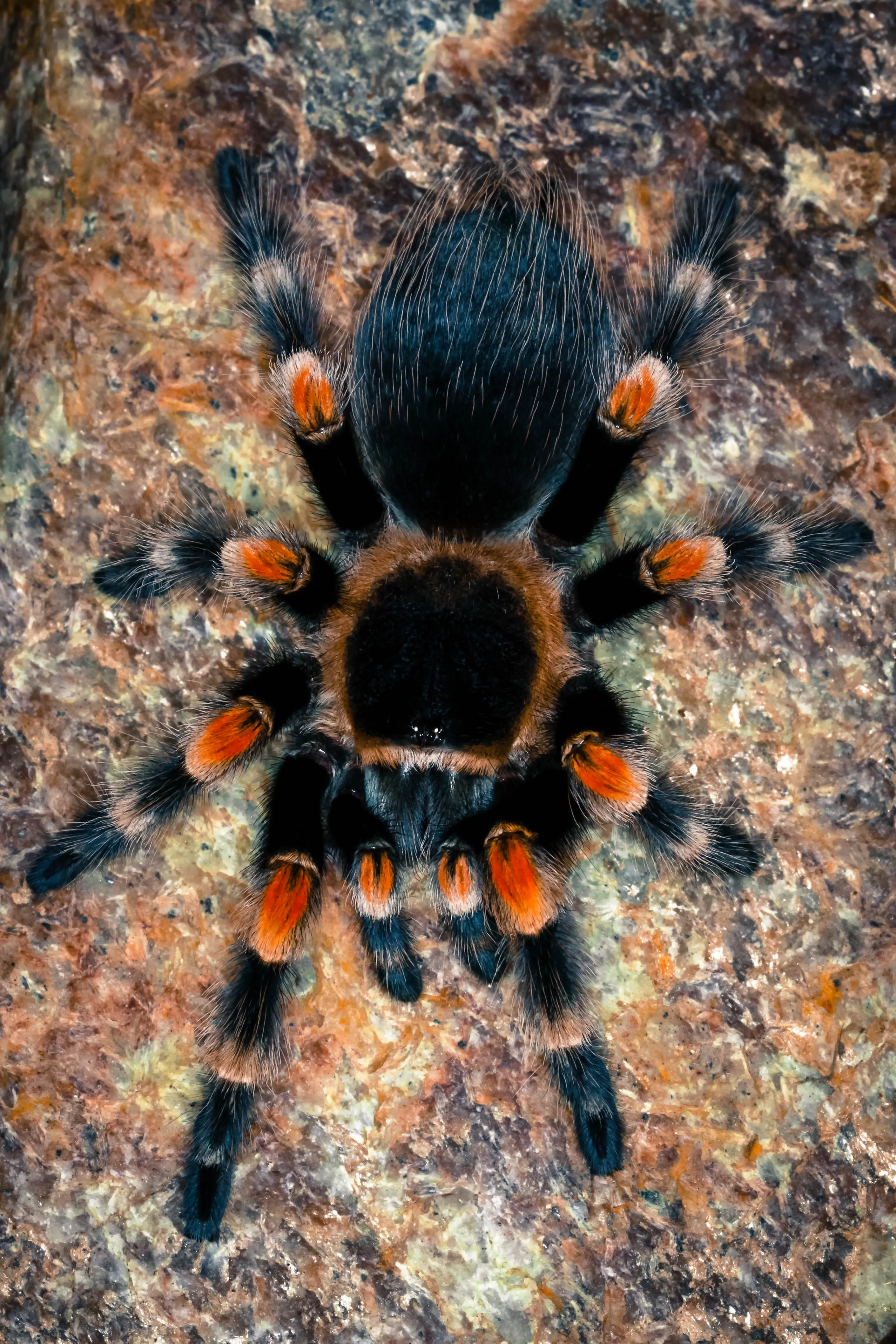
The Orange Chevron Tarantula is native to the lush, humid environments of Guyana and Venezuela, specifically inhabiting the tropical rainforests of these regions. In the wild, these spiders are arboreal, which means they live primarily in trees. They construct their webs in the crevices of trees, under the bark, or among the foliage. The high humidity and consistent temperatures of their natural habitat are crucial for their survival. These tarantulas thrive in environments with plentiful rainfall and dense vegetation, providing ample cover and opportunities for hunting insects and other small prey. Understanding their origin helps in replicating the ideal conditions for them in captivity, ensuring their health and well-being.
Top 5 Amazing Facts
Fact 1: The Striking Chevron Pattern
As the name suggests, the most striking feature of the Orange Chevron Tarantula is the chevron pattern on its legs and carapace. These vibrant orange markings are not only visually appealing but also serve a purpose. They may act as a form of camouflage or warning coloration, deterring potential predators. The intensity of the orange color can vary slightly depending on the individual and its stage of life, but the chevron pattern is consistently present, making it a key identifier for this species. The intricate design of the chevrons adds to the beauty of this tarantula and makes it a favorite among collectors. This pattern is one of the most distinctive features of this fascinating species.
Fact 2: Arboreal Lifestyle
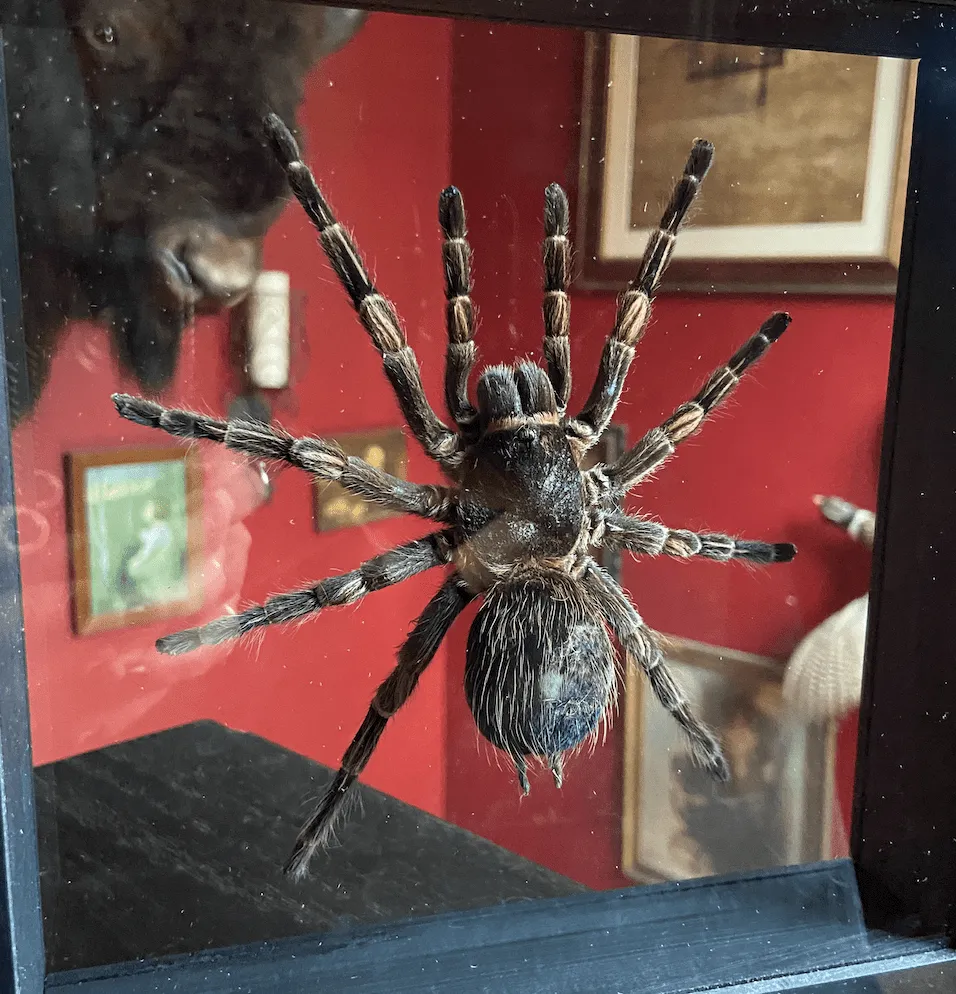
Unlike many tarantula species that are terrestrial, the Orange Chevron Tarantula is arboreal, meaning it lives in trees. This behavior is reflected in its adaptations, such as the ability to climb efficiently and build webs in vertical spaces. In the wild, they are often found in tree crevices or under bark, constructing silken retreats where they spend most of their time. This lifestyle also influences their hunting strategies, as they are ambush predators, waiting for unsuspecting prey to come within reach. Their arboreal nature makes their care in captivity unique, requiring a taller enclosure with climbing opportunities rather than a wide, ground-level habitat. This is a significant difference between the Orange Chevron and other tarantula species.
Fact 3: Venom and Its Effects
Like all tarantulas, the Orange Chevron has venom, used primarily to subdue prey. While the venom is not considered lethal to humans, a bite can be painful and cause localized symptoms. Symptoms of a bite may include pain, redness, and swelling at the bite site. In some cases, individuals may experience muscle cramps, nausea, and other mild systemic effects. It is crucial to handle these tarantulas with care and avoid any unnecessary contact. If bitten, it’s essential to clean the area thoroughly and monitor for any adverse reactions. The venom is mainly for subduing prey, and it is rarely a major threat to humans. Always prioritize safety and caution when interacting with any tarantula species.
Fact 4: Lifespan of Orange Chevron Tarantulas
The Orange Chevron Tarantula has a relatively long lifespan compared to many other invertebrates. Females can live for up to 10-12 years or even longer under optimal conditions. Males, however, have a shorter lifespan, typically living for only 2-3 years after reaching maturity. This difference in longevity is common among tarantula species. The long lifespan of females makes them a long-term commitment for owners, requiring consistent care and attention over many years. Factors such as proper diet, temperature, and humidity play a significant role in maximizing their lifespan. Providing a suitable environment is crucial for the well-being of your tarantula.
Fact 5: Feeding Habits
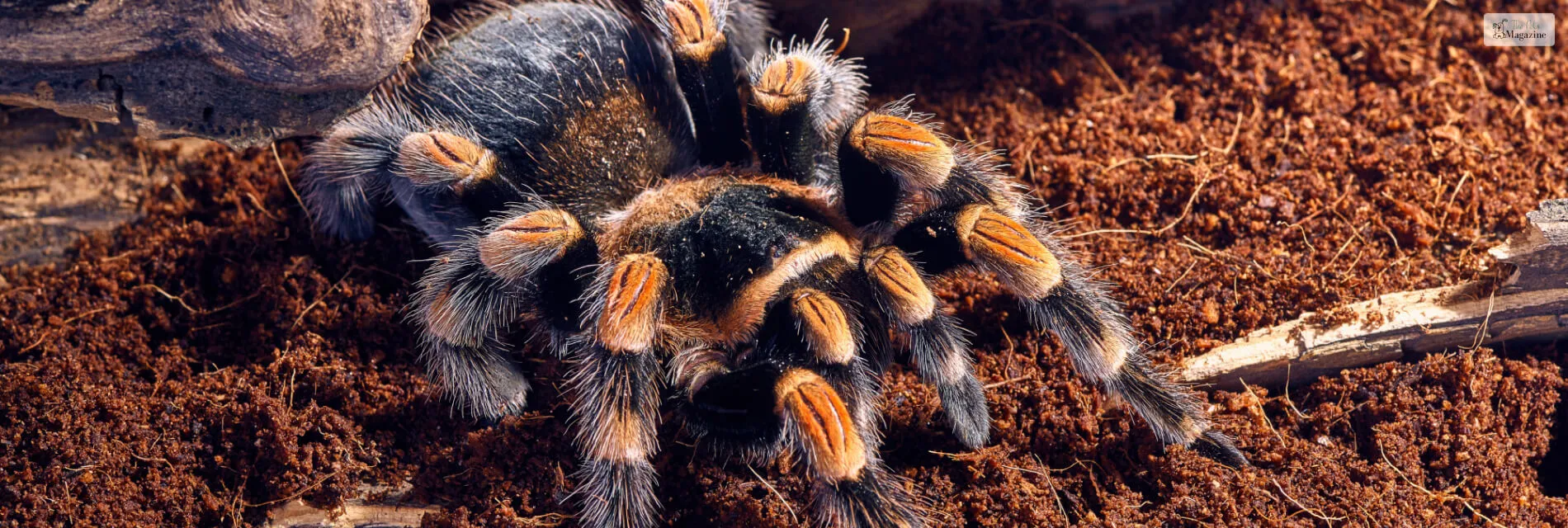
The Orange Chevron Tarantula is an opportunistic predator, feeding primarily on insects in the wild. In captivity, they can be fed a variety of insects, including crickets, roaches, mealworms, and other commercially available options. Feeding frequency depends on the tarantula’s age and size. Spiderlings require more frequent feeding, while adults can be fed less often, typically once or twice a week. It’s essential to offer a varied diet to ensure they receive the necessary nutrients. Always remove any uneaten food to prevent the growth of mold or mites in the enclosure. Proper feeding practices contribute significantly to the overall health and longevity of your Orange Chevron Tarantula.
Caring for an Orange Chevron Tarantula
Choosing the Right Enclosure
Selecting the appropriate enclosure is the first step in providing proper care for your Orange Chevron Tarantula. Since they are arboreal, a tall enclosure is essential. A good size for an adult is typically 12x12x18 inches or larger. The enclosure should be well-ventilated but secure, preventing escapes. It should have a secure lid to prevent the tarantula from escaping. Decorations such as cork bark, branches, and artificial plants should be included to mimic their natural habitat and provide climbing opportunities. The enclosure should be made of a clear material so you can admire and monitor your pet. Always ensure the enclosure is escape-proof and has adequate ventilation to maintain healthy conditions.
Maintaining Temperature and Humidity
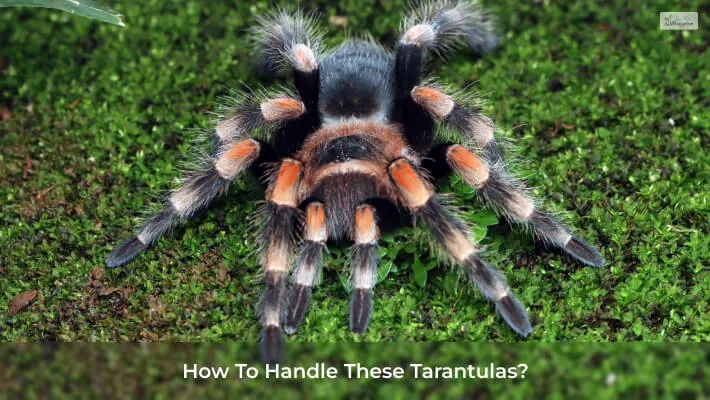
Maintaining the correct temperature and humidity levels is critical for the health of your Orange Chevron Tarantula. The ideal temperature range is between 75-85°F (24-29°C). A heat mat placed on the side of the enclosure can help maintain this temperature, but be careful not to overheat the enclosure. Humidity should be kept at around 70-80%. This can be achieved by misting the enclosure with water a few times a week. Regular monitoring with a hygrometer and thermometer is essential to ensure the environment is optimal. Proper temperature and humidity are essential for successful molting and overall well-being. The right environment will help your tarantula thrive.
Feeding and Diet
Feeding your Orange Chevron Tarantula a balanced diet is crucial for its health. Offer a variety of feeder insects, such as crickets, roaches, and mealworms. The size of the food should be appropriate for the size of the tarantula; a general rule is that the prey should be no larger than the tarantula’s body. Spiderlings should be fed more frequently, while adults can be fed once or twice a week. Remove any uneaten food within 24 hours to prevent the build-up of mold or mites. Ensure your feeder insects are gut-loaded with nutritious food before feeding them to your tarantula. This will ensure your tarantula gets all the nutrients it needs.
Handling and Safety
Handling an Orange Chevron Tarantula should be done with caution. These tarantulas are generally fast and can be skittish, which increases the risk of accidental bites or falls. It is generally recommended to avoid handling them unless absolutely necessary, such as during enclosure maintenance. If handling is required, do so over a soft surface to prevent injury if the spider falls. Always wash your hands thoroughly before and after handling. Be aware of your tarantula’s behavior and body language, and respect its space. This will minimize the risk of any unpleasant interactions. Safety for both the tarantula and the handler should always be the priority.
Common Health Issues
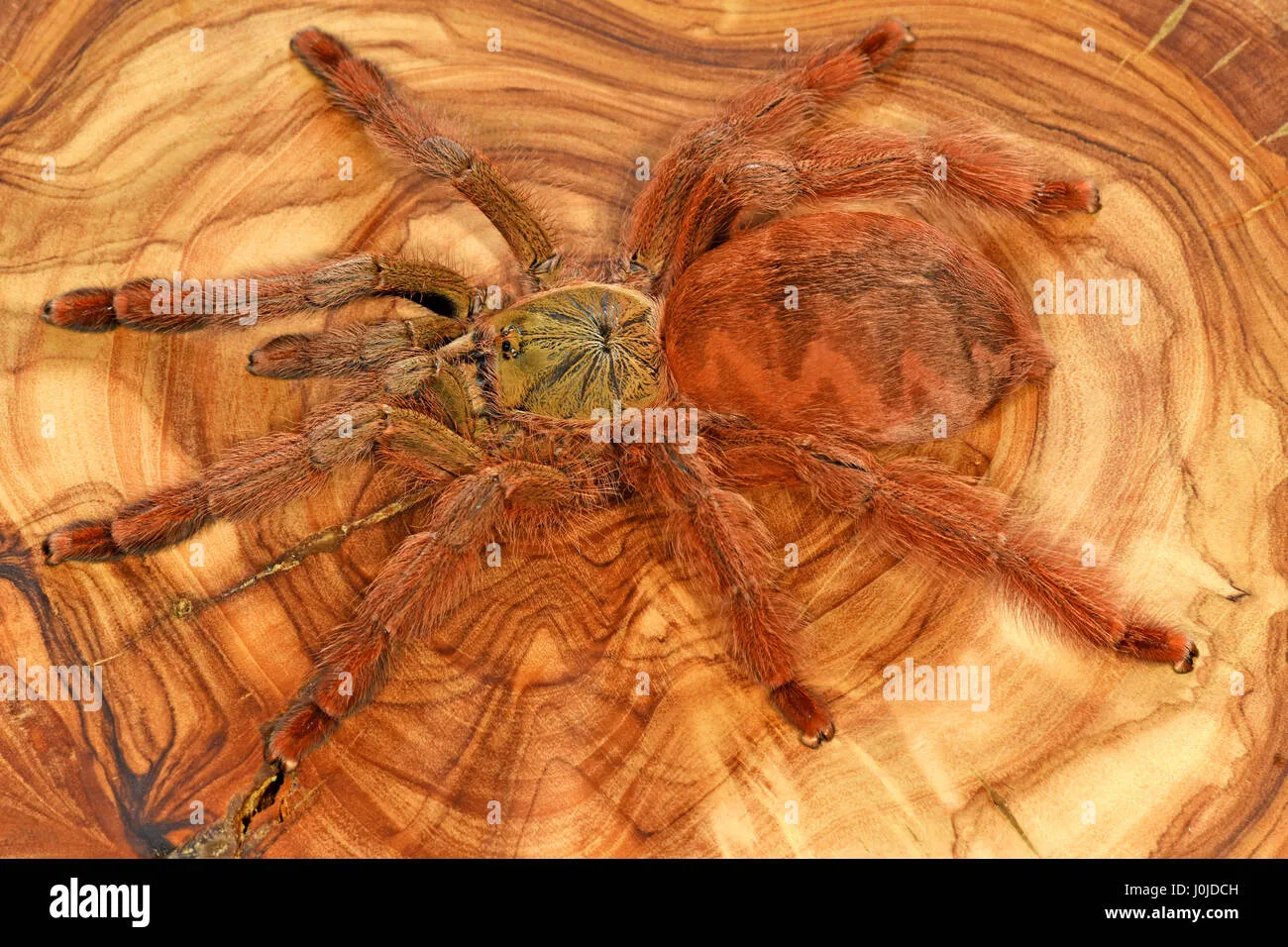
Like any pet, Orange Chevron Tarantulas can be susceptible to certain health issues. Common problems include dehydration, parasites, and molting issues. Dehydration can be prevented by ensuring adequate humidity and providing a water dish. Parasites are less common in captive-bred tarantulas, but it is still important to monitor your pet for any signs of infection. Molting problems can occur if the humidity or temperature is not ideal. Look out for symptoms such as the tarantula having difficulty molting or losing limbs. If you notice any issues, consult with a veterinarian or experienced tarantula keeper. Proper care and maintenance will help minimize potential health problems.
Conclusion
The Orange Chevron Tarantula is a stunning and intriguing species for those interested in keeping exotic pets. Their striking appearance, arboreal lifestyle, and fascinating characteristics make them a rewarding pet for the experienced arachnid enthusiast. By understanding their specific needs and providing proper care, you can enjoy the beauty and unique behavior of this amazing tarantula. From the vibrant chevrons to their arboreal nature, the Orange Chevron Tarantula offers a captivating glimpse into the fascinating world of arachnids. Remember to always prioritize safety, respect their space, and enjoy the journey of caring for this beautiful creature.